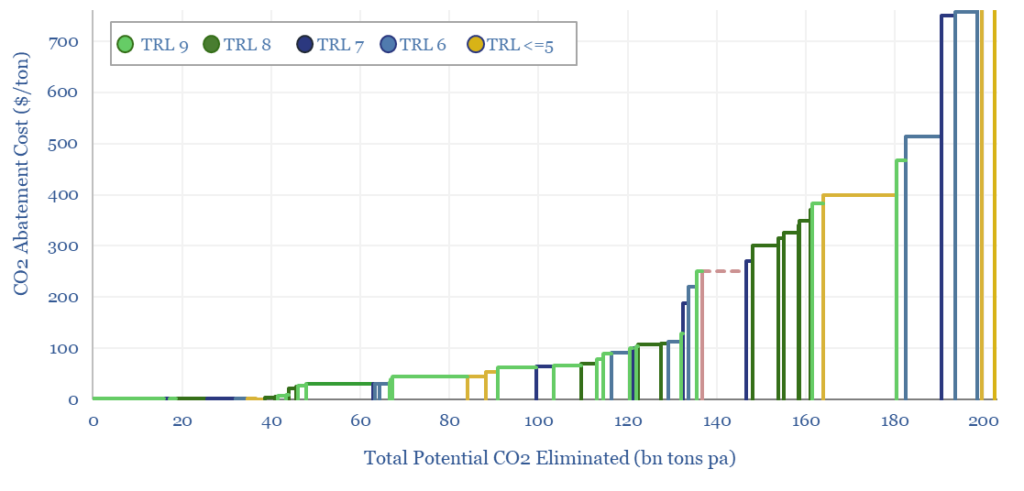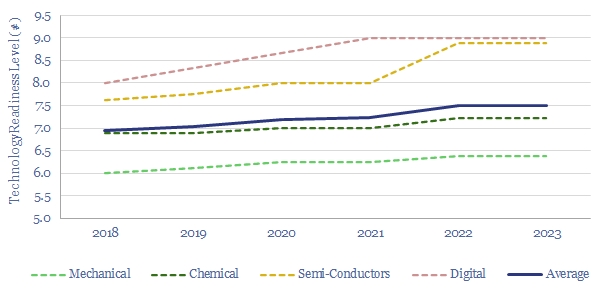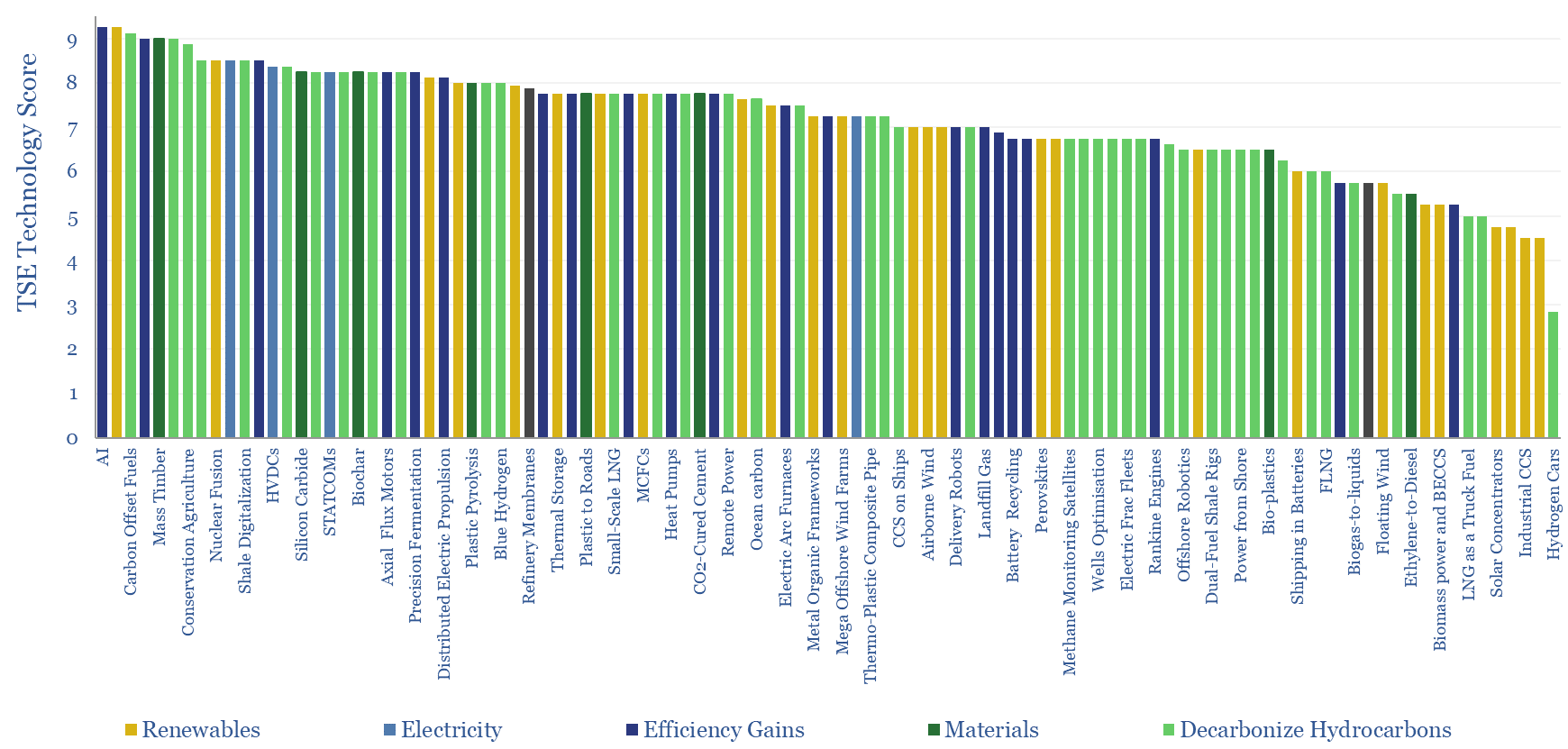The energy transition technologies are aggregated in this data-file, scoring their economics, technical readiness, and decarbonization potential, as assessed apples-to-apples across all of Thunder Said Energy’s energy transition research.
Specifically, for each energy transition technology, we have summarized the opportunity in two-lines. Then we score its economic impact, its technical maturity (TRL), and the depth of our work on the topic to-date.
The output is a ranking of the top technologies in the energy transition, by category; and a “cost curve” for the total costs to decarbonize global energy.

Specifically, the world’s energy system will rise from 80,000 TWH pa of useful energy in 2022 to well over 100,000 TWH of useful energy by 2050. All else equal, this would increase global CO2e emissions from 50GTpa to 80GTpa. But the opportunities in this data-file can decarbonise the global energy system almost 3x over by 2050.
Our roadmap to net zero picks as many bars as possible from the left-hand side of the energy transition cost curve, to achieve the most decarbonization for the lowest cost. The most economical roadmap has an average abatement cost of $40/ton. The contribution of each technology, and energy transition cost of each technology are modelled out in this database.
A breakdown of the top energy transition technologies: We see around 20% of all decarbonization coming from renewables (wind, solar, next-generation nuclear), efficiency technologies that do ‘more with less’ (electric vehicles, electrification, power-electronics, advanced materials, advanced manufacturing), switching coal to gas and LNG (50-60% lower CO2 per MWH), carbon capture and storage (CCS, blue hydrogen, CO2-EOR, CO2-to-materials) and nature based solutions to climate change (reforestation, conservation agriculture, blue carbon).
How much will new technologies change our roadmap to net zero? We are constantly writing about new technologies, including screening the patents of emerging companies. However, one sober conclusion from our past five years of research is that new technologies emerge quite slowly (chart below). Especially in later stages, as they shift from controlled conditions in the lab, to real-world challenges, such as large-scale engineering, construction, operation and regulation.


